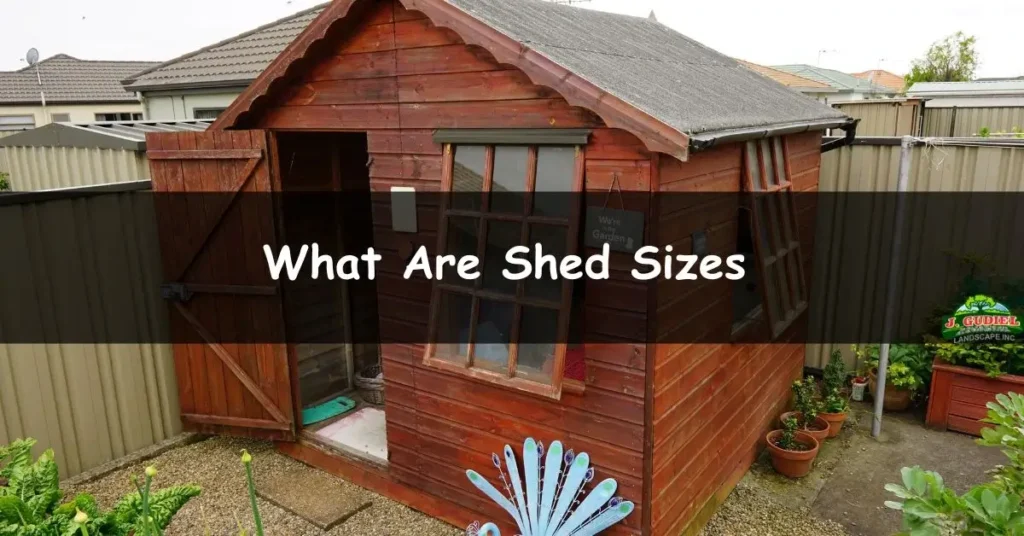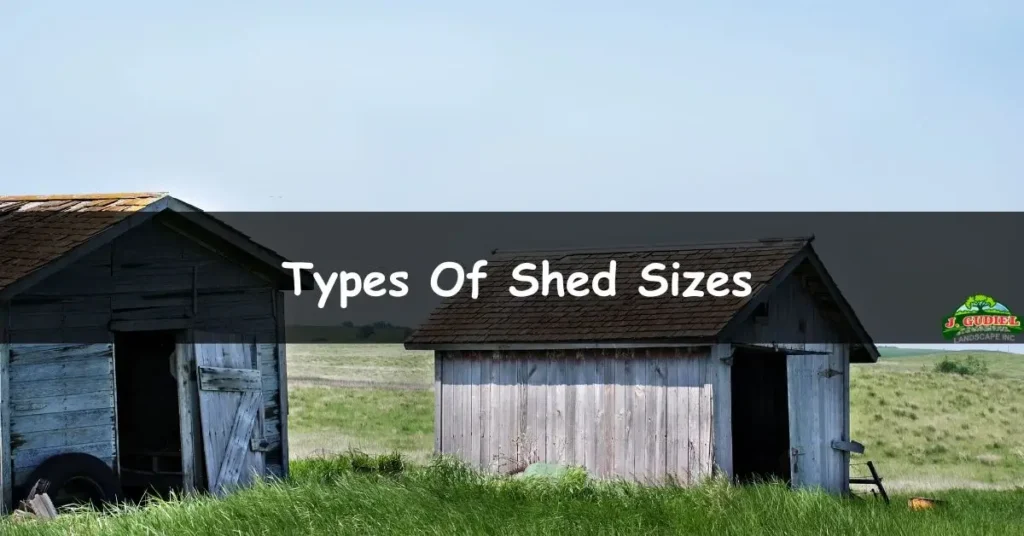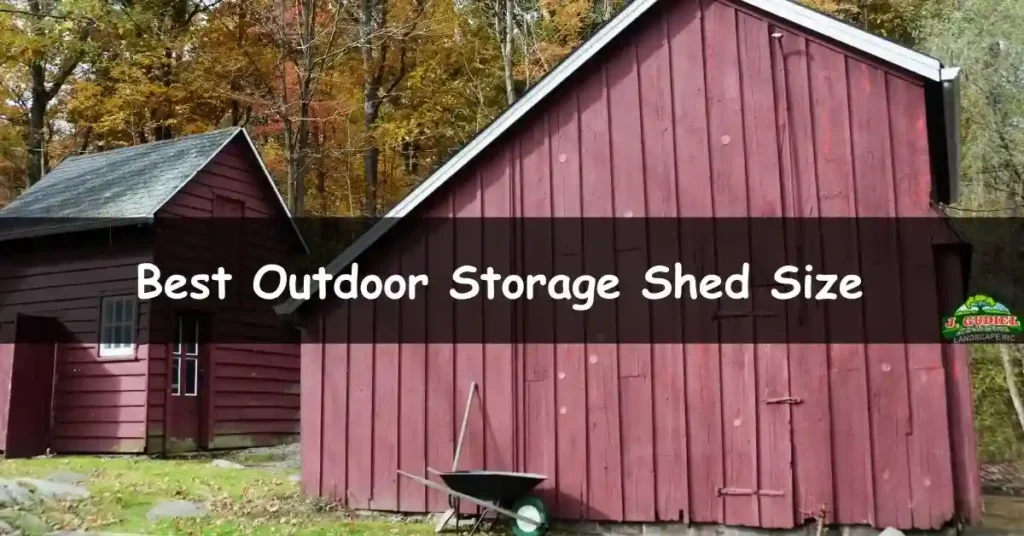Shed sizes are more than just measurements; they’re critical factors determining how effectively your outdoor space is utilized. Whether you’re considering a small storage unit for gardening tools or a more extensive workshop for DIY projects, understanding shed dimensions is essential. In this guide, we’ll explore the significance of shed sizes, decode the terminology, and offer insights to help you find the perfect fit for your needs. Let’s dive into the world of shed dimensions and make informed decisions about your outdoor storage solutions.
What Are Shed Sizes

Shed sizes refer to the dimensions or measurements of a shed. It’s how big or small the shed is, usually measured in length, width, and height. These measurements are crucial as they determine how much space you have for storage or other activities inside the shed. Whether you’re looking for a compact unit to store gardening tools or a larger space for a workshop, understanding shed sizes helps ensure you choose the right fit for your needs and available space.
Types Of Shed Sizes

There are three common types of shed sizes:
- Small sheds
- Medium sheds
- Large sheds
Small Shed Sizes
Small shed sizes typically refer to compact dimensions suitable for basic storage needs or limited outdoor spaces. These sheds are designed to offer storage solutions while minimizing their footprint. Standard small shed sizes range from around 4 feet by 6 feet to 8 feet by 10 feet, providing enough space for storing gardening tools, bicycles, or seasonal equipment. Despite their modest dimensions, small sheds can be versatile and functional, offering convenient storage options for homeowners with limited outdoor space or specific storage requirements.
Medium Shed Sizes
Medium shed sizes typically fall between small and large sheds, offering a balance of space and versatility. These sheds are suitable for homeowners who require more storage capacity than a small shed can provide but don’t need the extensive space of a large shed. Standard medium shed sizes might include dimensions like 8 feet by 10 feet, 10 feet by 12 feet, or 12 feet by 14 feet, offering around 80 to 168 square feet of floor area.
Medium-sized sheds can accommodate various storage needs, including lawn and garden equipment, tools, bicycles, and seasonal items while providing space for workbenches or shelving units for the organization. They offer flexibility and functionality, making them popular choices for many homeowners with moderate storage requirements and available outdoor space.
Large Shed Sizes
Large shed sizes offer expansive dimensions that serve multiple purposes, making them ideal for various uses such as workshops, art studios, home gyms, home offices, or even additional living spaces. With their vast space, these sheds can accommodate a wide range of items, including small tractors, built-in workbenches, ATVs, motorcycles, bicycles (around 4-5 bikes), lawn furniture, ladders, wheelbarrows, canoes, and gas grills.
Standard small shed sizes, like 10×16, 12×12, and 12×16, provide sufficient space for basic storage needs or limited outdoor spaces, typically ranging from 160 sq ft to 192 sq ft in area with a maximum height of more than 8 ft. Despite their modest dimensions, these small sheds can offer versatility and functionality, catering to homeowners with specific storage requirements or limited outdoor space availability.
Best Outdoor Storage Shed Size

The best outdoor storage shed size depends on various factors, including your storage needs, available space, and budget. Here are some considerations to help you determine the appropriate size:
Inventory of Items
Create a detailed list of the items you intend to store in the shed, including their dimensions and any special considerations, such as shelving or hanging space. This will help you estimate the required square footage accurately.
Future Needs
Expect any changes in your storage needs over time. Factors like acquiring new equipment, hobbies, or lifestyle changes could necessitate additional storage space. Choosing a shed slightly larger than your current needs can save you from having to upgrade later.
Available Space
Measure the designated area where you plan to install the shed. Consider factors like accessibility, proximity to other structures, and clearance requirements. Ensure the shed’s size allows for adequate ventilation and maintenance space around its perimeter.
Regulations and Permits
Research local zoning laws, building codes, and homeowner association guidelines for shed size, height, setback requirements, and design specifications. Before purchasing or installing the shed, obtain any necessary permits or approvals to avoid potential fines or legal issues.
Usage
Determine how you’ll utilize the shed beyond essential storage. If you plan to use it as a workshop, garden shed, or hobby space, add additional square footage for workbenches, tools, equipment, or seating areas. Consider the layout and organization of the interior space to optimize functionality.
Budget
Establish a budget for the shed, considering the initial purchase price and any additional costs for site preparation, foundation, delivery, assembly, and optional features like windows, doors, insulation, or electrical wiring. Compare prices from different suppliers and materials to find the best value for your investment.
Aesthetics
Choose a shed size and style harmonizing with your property’s architecture, landscaping, and overall design aesthetic. Consider factors like roof pitch, siding materials, color palette, and decorative elements to enhance curb appeal and blend seamlessly with the surroundings.
Carefully considering these factors helps you choose the best size for your outdoor storage shed, meeting functional needs, regulations, aesthetics, and budget.
Conclusion
Shed sizes range from small to large, offering versatile storage solutions for various needs. Small sheds, such as 6×4 or 8×6, are perfect for storing gardening tools, outdoor equipment, and bikes. Medium-sized sheds like 8×8 or 10×10 provide additional space for more extensive tools, workspace, and seasonal storage. Larger sheds, including 10×12 or 12×16, offer ample room for workshops, storage of large items, and multi-purpose use. Choosing the right shed size involves considering factors like inventory, space availability, regulations, usage, aesthetics, and budget. By carefully evaluating these aspects, homeowners can select the optimal shed size to enhance organization and convenience while complementing their property.
FAQs:
Q1: What size shed do I need for primary storage purposes?
A: For essential storage like gardening tools and outdoor gear, a compact shed, such as 6×4 or 8×6, is perfect. These sizes offer enough space to keep essential items organized and easily accessible.
Q2: How do I determine the right shed size for my workshop needs?
A: If you plan to use the shed as a workshop, consider medium to large sizes like 8×8 or 10×12. These sizes provide ample room for workbenches, tools, equipment, and workspace, allowing you to engage in DIY projects comfortably.
Q3: What shed size is suitable for storing large items like lawnmowers or ATVs?
A: For storing more oversized items like ride-on lawnmowers, snow blowers, or ATVs, opt for larger shed sizes such as 10×12 or 12×16. These sizes offer enough space to accommodate bulky items while providing room for additional storage or workspace.
Q4: Can I customize the shed size to fit my space requirements?
A: Many shed manufacturers offer customizable options to fit your space constraints and storage needs. You can work with them to create a shed size that perfectly matches your available space while maximizing storage capacity and functionality.

